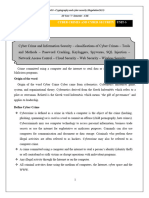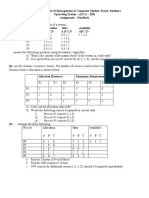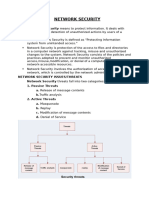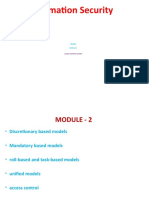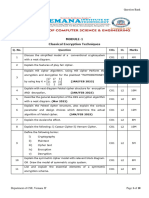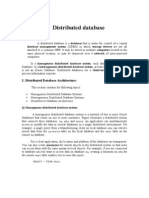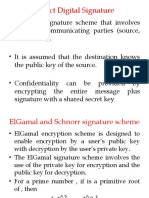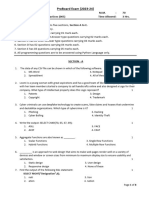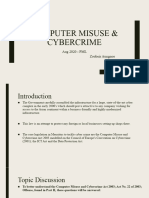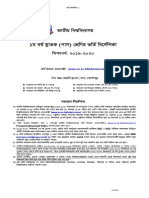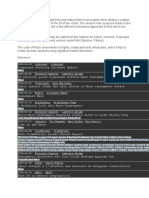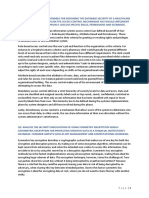0% found this document useful (0 votes)
188 views22 pagesCryptography and Network Security Behrouz ch01 Slides
This chapter introduces the key concepts of information security. It defines three main security goals: confidentiality, integrity, and availability. These goals can be threatened by security attacks, which are categorized as either passive or active. The chapter also outlines common security services like authentication, access control, and non-repudiation, and how they relate to mechanisms like encryption, digital signatures, and firewalls. Finally, it presents cryptography and steganography as two important techniques for implementing security mechanisms. The rest of the book is organized into parts covering symmetric and asymmetric encryption, integrity and authentication, and network security.
Uploaded by
Christina JosephCopyright
© © All Rights Reserved
We take content rights seriously. If you suspect this is your content, claim it here.
Available Formats
Download as PDF, TXT or read online on Scribd
0% found this document useful (0 votes)
188 views22 pagesCryptography and Network Security Behrouz ch01 Slides
This chapter introduces the key concepts of information security. It defines three main security goals: confidentiality, integrity, and availability. These goals can be threatened by security attacks, which are categorized as either passive or active. The chapter also outlines common security services like authentication, access control, and non-repudiation, and how they relate to mechanisms like encryption, digital signatures, and firewalls. Finally, it presents cryptography and steganography as two important techniques for implementing security mechanisms. The rest of the book is organized into parts covering symmetric and asymmetric encryption, integrity and authentication, and network security.
Uploaded by
Christina JosephCopyright
© © All Rights Reserved
We take content rights seriously. If you suspect this is your content, claim it here.
Available Formats
Download as PDF, TXT or read online on Scribd
/ 22
